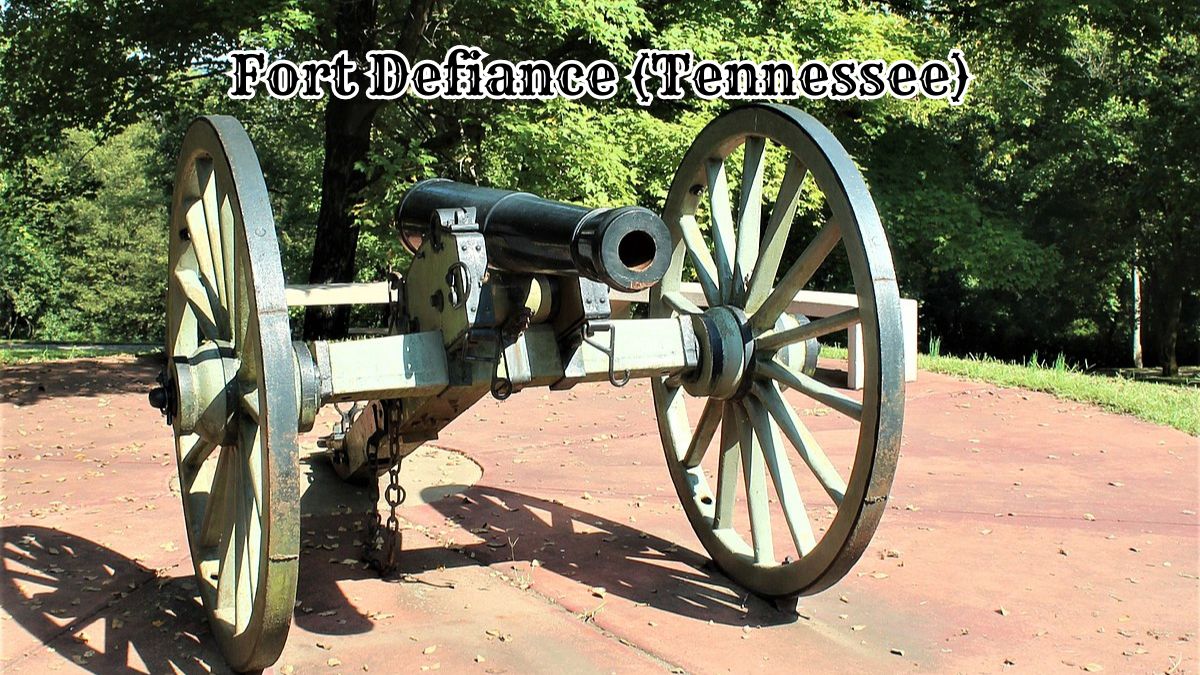Fort Defiance, Tennessee, is a historical gem in Clarksville, offering a captivating glimpse into its Civil War past. Established by Confederate troops in 1861, it played a pivotal role in controlling the strategic Cumberland River.
Despite being captured by Union forces in 1862, Fort Defiance remained central to many military operations. Today, the site features a well-preserved interpretive center with exhibits and artifacts that bring its history to life.
Visitors can explore the fort’s restored earthworks and scenic walking trails and participate in educational programs, making it a must-visit destination for history enthusiasts.
History of Fort Defiance (Tennessee)
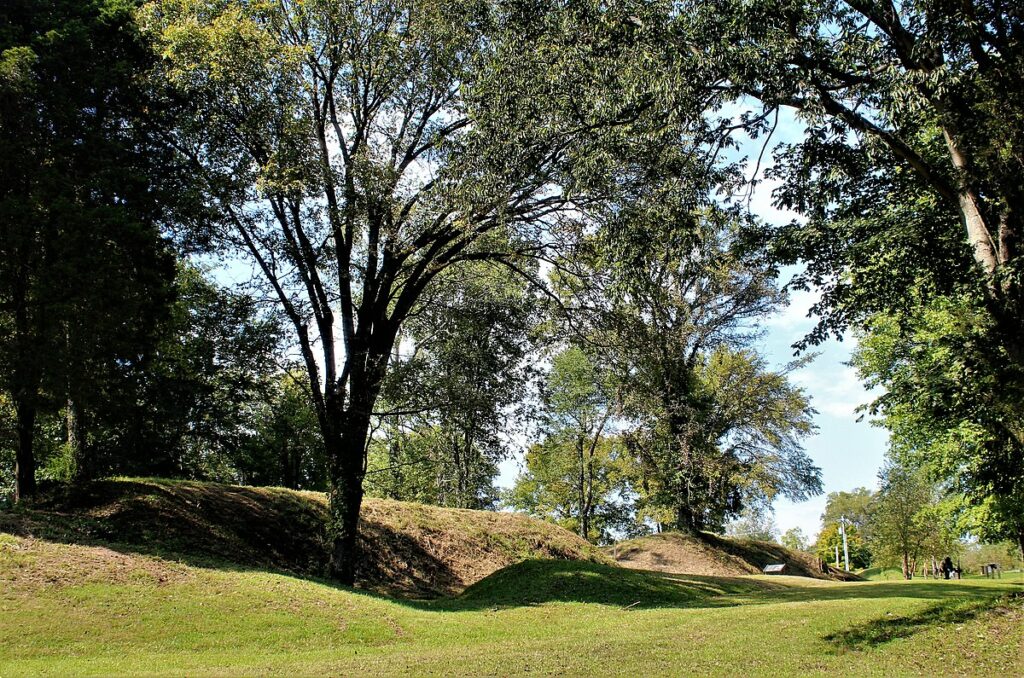
Civil War Importance
Fort Defiance played a crucial role during the American Civil War. Confederate troops built it in 1861 to control the strategic location by the Cumberland River.
However, Union forces captured the fort in 1862, which led to the Union’s control of the river and the eventual capture of Nashville.
The fort was also a significant part of the Battle of Fort Donelson in 1862.
Confederate troops used the fort as a base to launch attacks on Union gunboats, but Union forces were able to capture the fort and use it to launch attacks on Confederate troops.
Strategic Location by the Cumberland River
Fort Defiance’s strategic location by the Cumberland River made it a valuable asset during the Civil War. The fort overlooked the river and provided a clear view of approaching Union gunboats.
It also allowed Confederate troops to control the river and prevent Union forces from using it to transport troops and supplies.
Today, Fort Defiance is a historical site that offers visitors a glimpse into the past. The fort has been restored and features exhibits and artifacts that highlight its importance during the Civil War.
It is a must-visit destination for anyone interested in the history of the American Civil War.
Fort Defiance Today
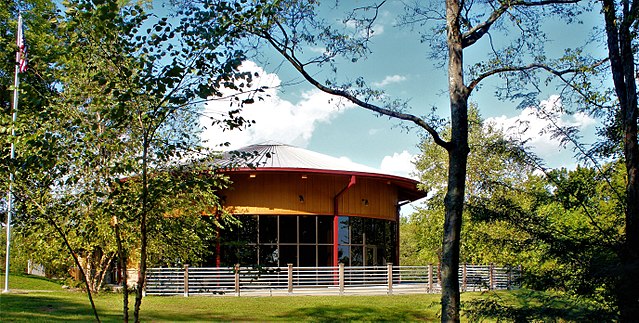
Fort Defiance Interpretive Center
Fort Defiance Interpretive Center is a preserved Civil War fort in Clarksville, Tennessee. It gives visitors a glimpse into the fort’s and the surrounding area’s history.
The center features exhibits, artifacts, and multimedia displays that showcase the lives of soldiers and civilians during the Civil War.
Volunteers staff the interpretive center. They know the fort’s history, can answer questions, and provide guided tours.
Visitors can explore the fort’s grounds and see the restored earthworks and cannons used during the Civil War.
Preservation and Restoration Efforts
Clarksville has made significant efforts to preserve and restore Fort Defiance. In recent years, the city has invested in restoring the fort’s earthworks and cannons, ensuring they remain in good condition for future generations.
Preservation efforts have also extended to the interpretive center, which has undergone renovations to improve the visitor experience.
The center now features interactive exhibits and multimedia displays that bring the fort’s history to life.
Cultural and Educational Impact
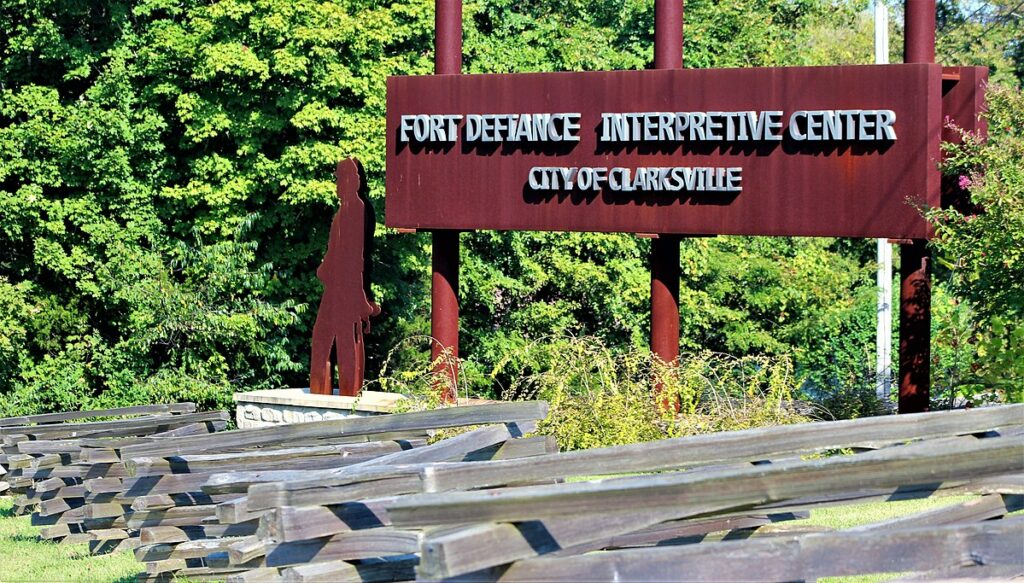
Exhibits and Events
Fort Defiance, Tennessee, has a rich history preserved through various exhibits and events.
The Fort Defiance Civil War Park and Interpretive Center is a popular destination for visitors interested in learning about the area’s role in the Civil War.
The park features exhibits that showcase the fort’s history and surrounding area, including the Battle of Fort Defiance.
Additionally, the park hosts various events throughout the year, such as reenactments and living history demonstrations, which provide visitors with a unique and immersive experience.
Educational Programs
Fort Defiance offers a range of educational programs that aim to promote a deeper understanding of the area’s history and culture.
The Fort Defiance Interpretive Center provides guided tours and educational programs for visitors of all ages, including school groups.
These programs cover various topics, such as the history of the fort, the Civil War, and the area’s cultural significance.
The center also offers teachers resources, such as lesson plans and educational materials, to help them incorporate the history of Fort Defiance into their curriculum.
Location Importance of Fort Defiance

Clarksville, Tennessee
Fort Defiance is located in Clarksville, Tennessee, a city in Montgomery County. Clarksville is the fifth-largest city in Tennessee and is known for its rich history.
The city has several landmarks and attractions, including the Customs House Museum and Cultural Center, the Roxy Regional Theatre, and the Dunbar Cave State Park.
Surrounding Natural Features
Fort Defiance is located near several natural features that add to its beauty and significance. The Cumberland River is a major waterway that runs through Clarksville and is an important resource for the region.
The river is known for its scenic beauty and provides opportunities for fishing, boating, and other recreational activities.
Riggins Hill is another natural feature that surrounds Fort Defiance. It is a prominent hill that rises above the surrounding landscape and provides stunning views of the area.
The hill is also home to several hiking trails and is a popular destination for outdoor enthusiasts.
The Red River is another significant natural feature in the area. It is a tributary of the Cumberland River and flows through Montgomery County.
The river is known for its scenic beauty and provides opportunities for fishing, boating, and other recreational activities.
Military Structures and Features
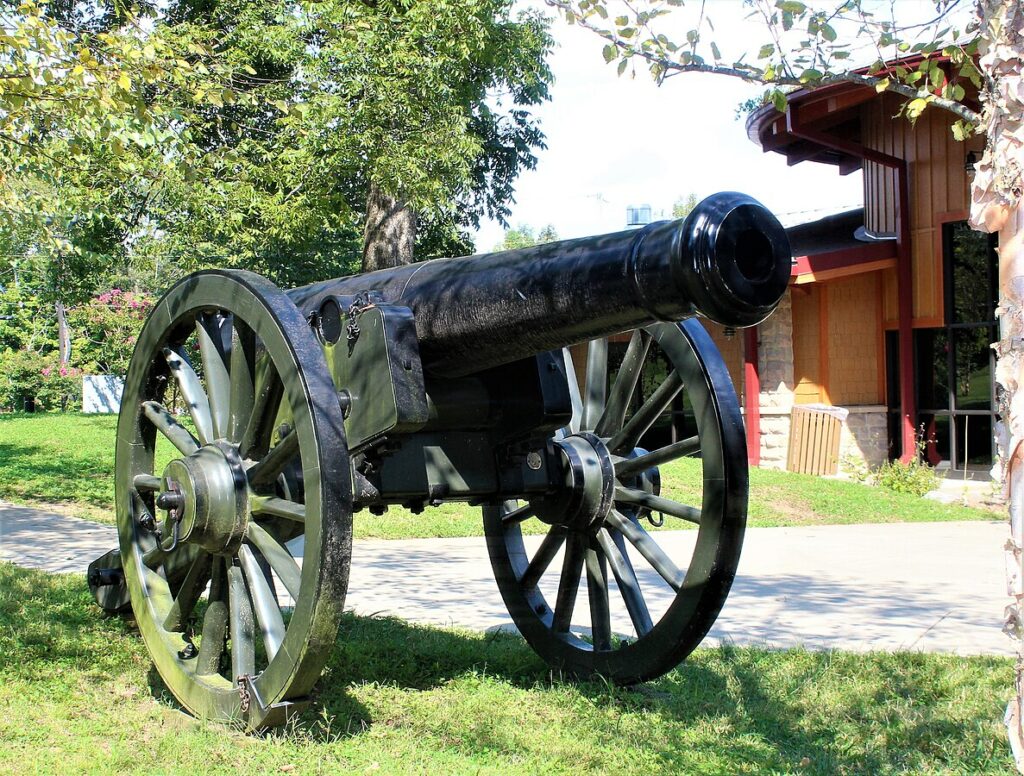
Earthworks and Gun Platforms
Fort Defiance in Tennessee was built to protect the Union Army’s supply lines during the Civil War. The fortifications were strategically located on a high hill overlooking the Cumberland River.
The earthworks at Fort Defiance were constructed with trenches, embankments, and parapets. The fortifications protected the Union Army from Confederate attacks, providing a strategic battle advantage.
The gun platforms at Fort Defiance were strategically placed to provide maximum coverage of the surrounding area. The platforms were constructed with a combination of earthworks and timber.
The gun platforms were designed to accommodate a variety of artillery pieces, including cannons and howitzers. They were strategically placed to provide maximum coverage of the surrounding area and a strategic advantage in battle.
Powder Magazine
The powder magazine at Fort Defiance was located securely away from the main fortifications. The magazine had thick walls and a reinforced roof to protect it from enemy fire.
The magazine was used to store ammunition and explosives for the Union Army. The magazine was strategically located to provide easy access to the main fortifications while minimizing the risk of damage from enemy fire.
Explore More: 21 Historic Forts in Tennessee
Key Figures and Units
Union and Confederate Leadership
Fort Defiance, Tennessee, was a strategic site during the Civil War. Union and Confederate leaders recognized the need to control this area, and several notable figures played a role in the conflict.
Colonel Rodney Mason, a veteran of the Mexican-American War with experience in engineering, was in charge of defending Fort Defiance on the Confederate side.
He oversaw the fort’s construction and was responsible for its defense during the Union assault.
Valentine Sevier, a local businessman and politician, also played a role in the Confederate defense of Fort Defiance. As a Tennessee House of Representatives member, Sevier was instrumental in securing funding for the fort’s construction.
On the Union side, General William S. Rosecrans, a West Point graduate with experience in engineering and logistics, was in charge of the campaign to capture Fort Defiance.
He coordinated a successful assault on the fort, which led to its capture.
71st Ohio Volunteers
The 71st Ohio Volunteers, led by Colonel Samuel Beatty, played a significant role in the capture of Fort Defiance. This regiment was part of the Union Army of the Cumberland.
The 71st Ohio Volunteers were involved in several engagements, including the Battle of Stones River, leading up to the capture of Fort Defiance.
They played a crucial role in the final assault on the fort and were among the first Union troops to enter the fortifications.
The regiment suffered significant casualties during the assault on Fort Defiance, but their bravery and determination played a key role in the Union victory.
Explore More: Army Forts in Tennessee
Historical Events and Legacy
Siege and Capture
Fort Defiance in Tennessee played a significant role in defending the Confederate forces during the Civil War. In 1862, Union troops launched a several-day attack on the fort.
The Confederates held their ground for a while but were eventually forced to surrender. The Union troops captured the fort and took control of the area.
The siege and capture of Fort Defiance were important events in the Civil War. They marked a turning point in the conflict and helped the Union forces gain momentum.
The capture of the fort also allowed the Union troops to move deeper into the South and gain control of more territory.
Post-War Developments
After the Civil War, Fort Defiance played a different role in the region. It became a refuge for freed slaves seeking protection and a new life.
The fort was also used as a base for guerrilla activity, which continued for several years after the war.
Over time, Fort Defiance’s legacy has become an important part of Tennessee’s history. The fort serves as a reminder of the struggles and sacrifices of those who fought in the Civil War and the following challenges.
Today, visitors can explore the site and learn more about the events there.
Fort Defiance’s legacy is also linked to other important historical events in the region. For example, Fort Bruce, located nearby, played a role in defending the Confederacy during the war.
Another significant event in the conflict was the capture of Fort Donelson, which occurred around the same time as the siege of Fort Defiance.
Recreational Aspects
Walking Trails and Scenic Views
Fort Defiance offers an array of walking trails that provide visitors with scenic views of the surrounding landscape. The trails are well-maintained and suitable for all levels of fitness.
The trails wind through wooded areas and offer panoramic views of the Cumberland River. Visitors can enjoy a stroll or a more challenging hike through the picturesque terrain.
Monuments and Memorials
Fort Defiance, Tennessee, has several monuments and memorials that tribute the area’s rich history.
The American flag is prominently displayed throughout the park, reminding us of the sacrifices made by those who have served our country.
Visitors can also explore the Fort Defiance Interpretive Center, which houses exhibits and artifacts that showcase the area’s role in the Civil War.
Fort Defiance in Local Identity
Influence on Clarksville’s Development
Fort Defiance played a significant role in shaping the development of Clarksville.
General James Wilkinson established the fort in 1794. Its strategic location at the Cumberland and Red Rivers confluence made it a vital hub for trade and transportation.
The fort’s presence attracted settlers to the area, and the town of Clarksville grew up around it.
In the early 19th century, Fort Defiance became an important center for producing tobacco and other crops. The fort’s location on the river allowed farmers to transport their goods to markets in New Orleans and other cities.
This helped to establish Clarksville as a major commercial center in the region.
Today, the fort is a popular tourist attraction and is a reminder of Clarksville’s rich history. Visitors can explore the fort’s grounds and learn about its role in the town’s development.
Role in Regional History
Fort Defiance also played a significant role in the region’s history. During the Civil War, the fort was used by both Union and Confederate forces.
In 1862, Confederate troops under General Nathan Bedford Forrest captured the fort and used it as a base of operations. The Union Army later recaptured the fort and used it as a supply depot.
The fort’s strategic location made it a target for both sides during the war. It was heavily fortified and saw several battles and skirmishes.
Today, visitors to the fort can see the remains of the earthworks and other fortifications built during the war.
Fort Defiance is an important part of the region’s history and identity. Its role in the development of Clarksville and its significance during the Civil War makes it a valuable resource for historians and visitors alike.
Early History and Settlement
Native Lands and White Settlers
Fort Defiance, Tennessee, has a rich history that dates back to the pre-Columbian era. Native American tribes, including the Cherokee, Chickasaw, and Creek originally inhabited the area.
These tribes had established settlements in the region and had a thriving trade network.
In the late 1700s, white settlers began to move into the area. Attracted by the fertile land and abundant game, they soon established their own settlements.
However, conflicts between the white settlers and the Native Americans were common, and tensions continued to rise.
Trading Center and Fort Sevier
In 1794, the United States government established Fort Sevier in the area. The fort was built to protect the white settlers from Native American attacks and to serve as a trading center.
The fort quickly became an important hub of commerce, helping to spur the growth of the surrounding settlements.
Over the years, Fort Sevier has played a crucial role in the development of the region. It was a center of military activity during the War of 1812 and a training ground for soldiers during the Civil War.
Today, the fort is a popular tourist attraction, and it is a testament to the rich history of Fort Defiance and the surrounding area.

Cory is a website owner and content creator who enjoys fishing, history, coin collecting, and sports, among other hobbies. He is a husband and father of four.
Romans 15:4 For whatever was written in former days was written for our instruction, that through endurance and through the encouragement of the Scriptures we might have hope.

